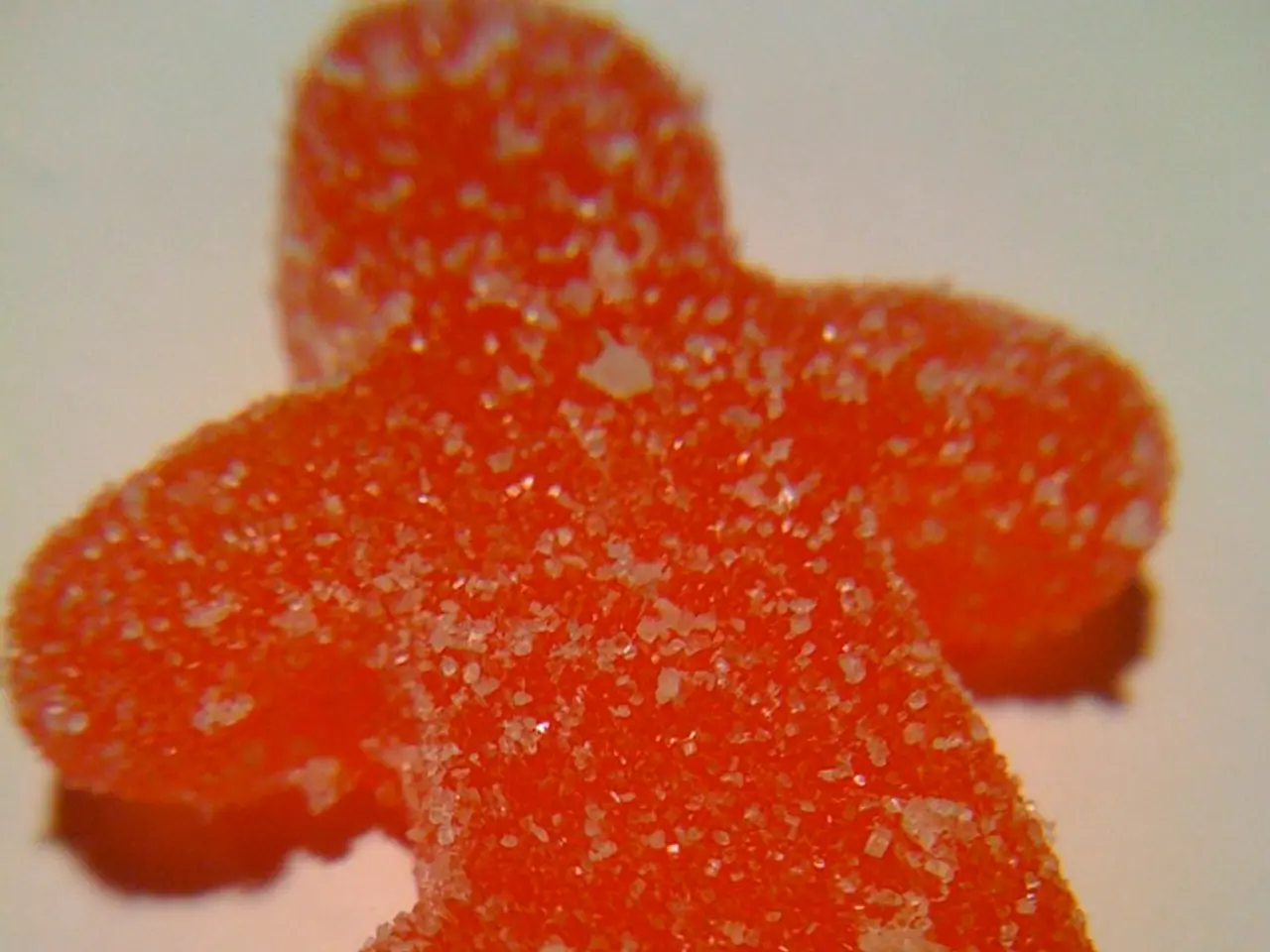Symptoms of Sugar Detox: Experiencing Withdrawal and Remedies
In today's world, where sugary treats are abundant, reducing sugar intake and managing withdrawal symptoms can be a challenging task. However, with the right strategies, it is achievable. Here's a practical guide to help you on your journey.
## Reducing Sugar Intake
1. Gradual Reduction: Instead of quitting sugar cold turkey, take it slow. Start by cutting sugar in small amounts each week. For instance, reduce the sugar in your coffee or breakfast cereal by half each week until you reach your goal.
2. Read Labels: Be mindful of hidden sugars in foods. Look for terms like high-fructose corn syrup or anything ending in "-ose" on nutrition labels. Opt for products with less than 5 grams of added sugar per serving.
3. Swap Sugary Drinks: Replace sodas and sweetened drinks with water, unsweetened tea, or sparkling water with a hint of real fruit juice. This can help reduce sugar intake significantly.
4. Eat Balanced Meals: Include protein and fibre-rich foods like vegetables, fruits, beans, and whole grains in your meals. These help regulate blood sugar and provide satiety.
## Managing Sugar Withdrawal Symptoms
1. Stress Management: Stress can trigger sugar cravings. Engage in stress-reducing activities like yoga, deep breathing, or walking to manage cortisol levels and reduce cravings.
2. Avoid Artificial Sweeteners: Instead of using artificial sweeteners, which can prolong sugar cravings, try to gradually reduce your exposure to sweet tastes. Opt for natural sugars in small portions within a balanced meal.
3. Stay Hydrated: Sometimes, thirst can masquerade as hunger or sugar cravings. Drinking enough water throughout the day can help manage these symptoms.
4. Eat Regularly: Avoid skipping meals to prevent sudden drops in blood sugar, which can trigger cravings. Include a balance of protein, fibre, and healthy fats in your meals and snacks.
By implementing these strategies, you can effectively reduce your sugar intake and manage withdrawal symptoms. Many people can benefit from reducing their added sugar intake by instead choosing fruits and vegetables. However, it's important to note that reducing sugar intake can lead to temporary detox or withdrawal symptoms. These may include cravings for sweet or high calorie foods, headaches, lack of energy, muscle aches, nausea, stomach cramps, irritability or anxiety, feeling down or depressed.
In severe cases, symptoms of low blood sugar or hypoglycemia can occur. These include dizziness or lightheadedness, confusion or trouble concentrating, loss of balance, irritability, irregular heartbeat, inability to eat or drink, loss of consciousness, seizures. If these symptoms interfere with your ability to perform regular activities, it's advisable to consult a doctor.
Tips for cutting out sugar safely include not using artificial sweeteners, gradually reducing sugar intake, eating fibre-rich foods, staying hydrated, and getting enough sleep. Remember, the journey to reducing sugar intake is a marathon, not a sprint. Be patient with yourself and celebrate small victories along the way.
Sources: 1. American Heart Association (2021) Added Sugars in Your Diet. [Online] Available at: https://www.heart.org/en/healthy-living/healthy-eating/eat-smart/sugar/added-sugars-in-your-diet 2. Mayo Clinic (2020) Sugar withdrawal: 9 tips to help you quit. [Online] Available at: https://www.mayoclinic.org/healthy-lifestyle/nutrition-and-healthy-eating/in-depth/sugar/art-20045579 3. World Health Organization (2015) Fact sheet: Sugars intake for adults and children. [Online] Available at: https://www.who.int/nutrition/publications/ugra/fs_fats/en/ 4. Harvard T.H. Chan School of Public Health (2021) The Truth About Food Additives. [Online] Available at: https://www.hsph.harvard.edu/nutritionsource/food-additives/ 5. Centers for Disease Control and Prevention (2020) Weight-related health conditions. [Online] Available at: https://www.cdc.gov/healthyweight/health_conditions/index.html
- To help manage the low energy and headaches that may arise during sugar withdrawal, maintaining a health-and-wellness lifestyle that includes fitness-and-exercise, nutrition, and stress management is crucial.
- Sufficient intake of magnesium, a vital nutrient, can aid in alleviating sugar withdrawal symptoms such as anxiety and depression, being crucial for nerve and muscle function.
- Reducing sugar intake can also have far-reaching benefits for overall health, such as reducing the risk of obesity, asthma, spondylitis, and predictive markers for heart disease and type 2 diabetes.
- Limiting sugar can have a positive impact on your digestive health, too, as consuming too much sugar leads to an imbalance of good bacteria in the gut, which can worsen conditions like ankylosing spondylitis and irritable bowel syndrome.
- By choosing fiber-rich foods like fruits, vegetables, and whole grains, you can support gut health, maintain regularity, and manage cravings as part of a comprehensive strategy for reducing sugar.
- Awareness of common sugar-laden foods, like baked goods, candy, and sweetened beverages, can help you make more informed choices when shopping for health-and-wellness products.
- Science demonstrates that a low-sugar diet is a sound strategy for overall wellness, with numerous studies showcasing its potential to enhance both physical and mental health.
- Implementing these strategies, however, requires a long-term commitment to a lifestyle change, with patience, persistence, and a focus on celebrating small successes along the journey.




